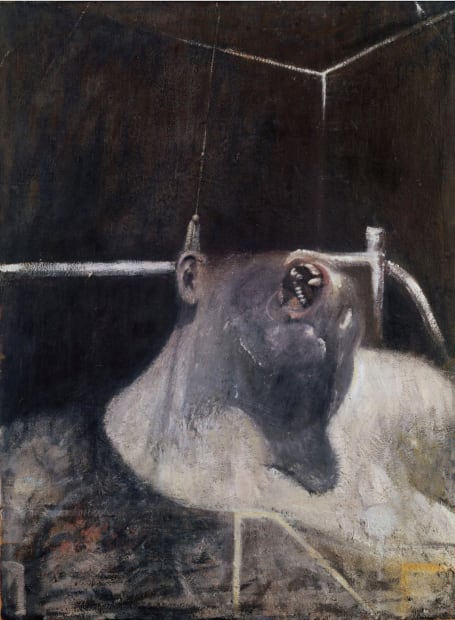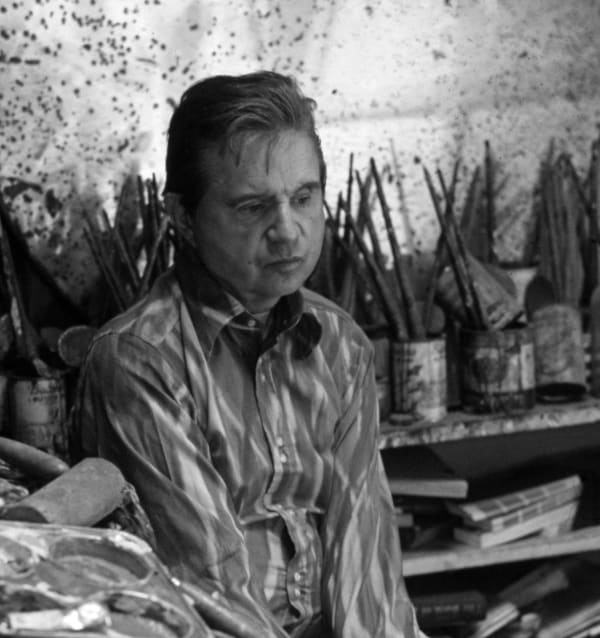-
 Head I, 1948Oil and tempera on hardboard40 ½ x 29 ½ in. (103 x 75 cm)©The Estate of Francis Bacon, image reproduced for educational purposes only
Head I, 1948Oil and tempera on hardboard40 ½ x 29 ½ in. (103 x 75 cm)©The Estate of Francis Bacon, image reproduced for educational purposes only -
“The job of the artist is always to deepen the mystery.”
- Francis Bacon
The rough texture of the hardboard surface, combined with Bacon’s layered brushwork, gives the painting a raw physicality that mirrors the unease of its subject. Created shortly after the devastation of the Second World War, Head I reflects the artist’s search for a new kind of portraiture, one that captures not appearance, but emotion and fragility. It stands as a powerful early example of Bacon’s lifelong focus on the vulnerability of the human condition.



